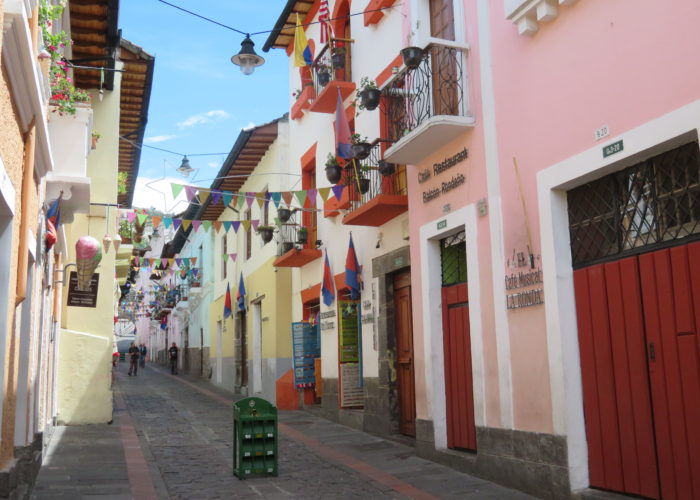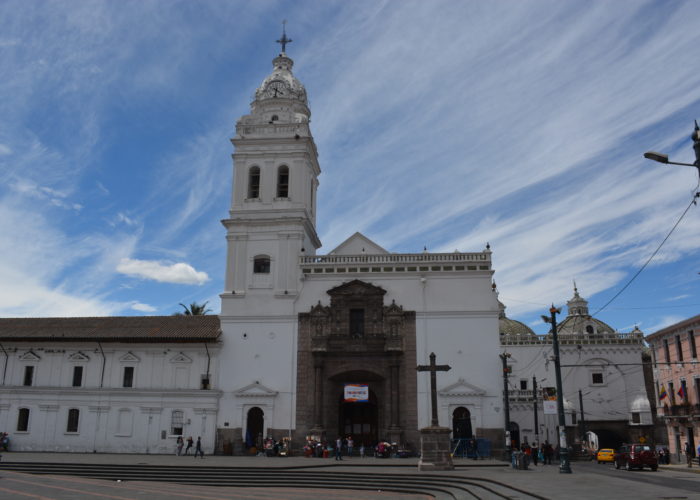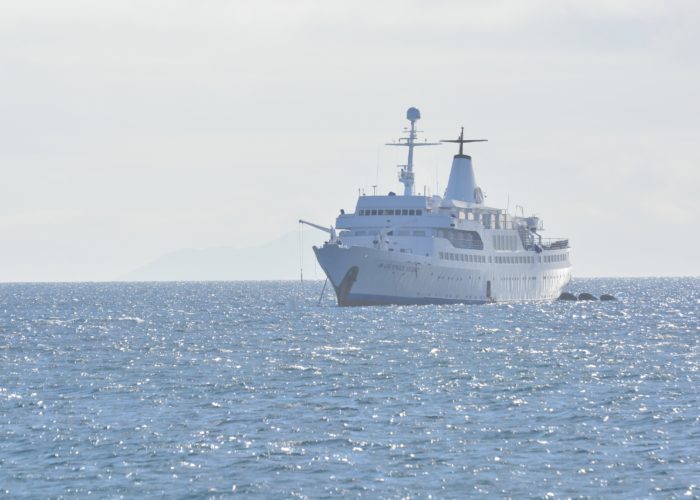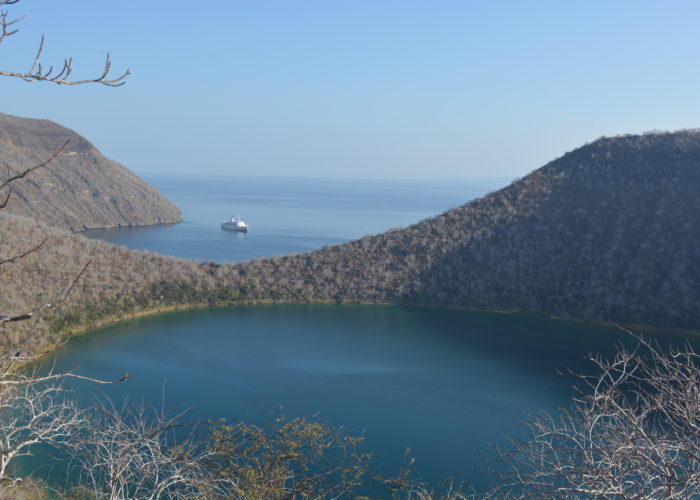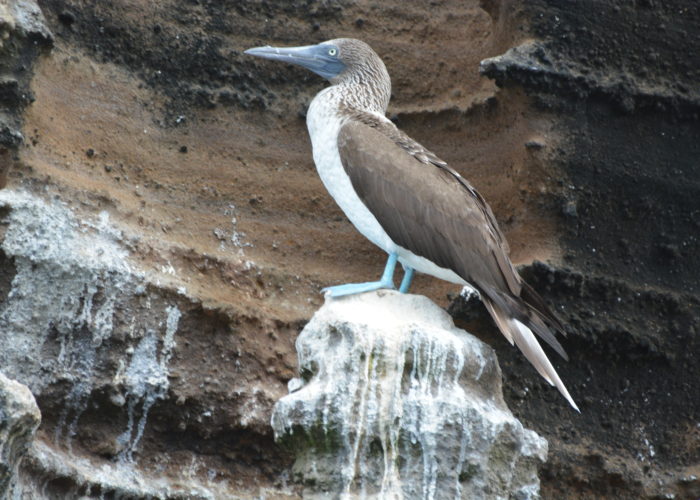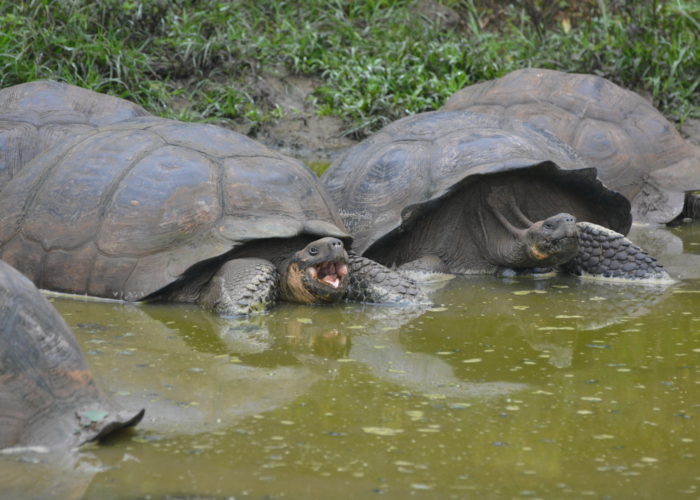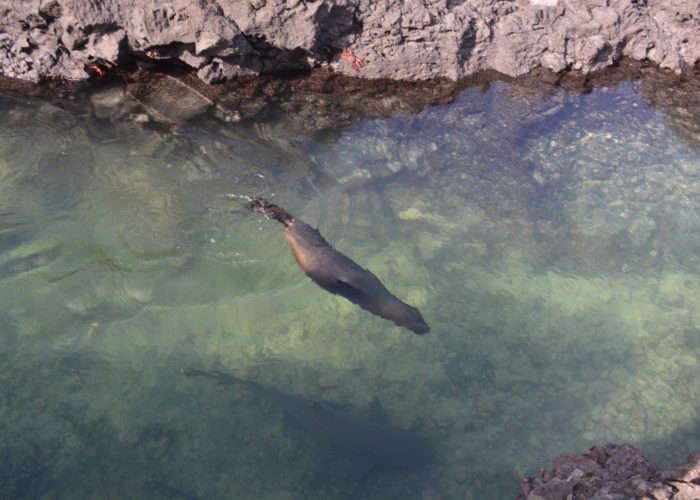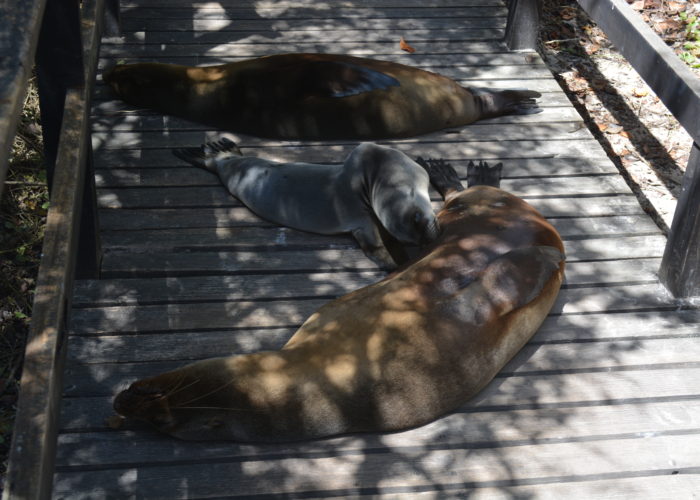Ecuador maybe a lot smaller the larger countries it borders but it packs in a lot of bio-diversity and also contains the Galapagos Islands, a remarkable collection of volcanic islands with unique flora and fauna. Ecuador’s constitution is the first in the world to formally recognise the rights of nature as well as the more usual rights of citizens and this means that the country is better than most and more enlightened in its management of the environment. The protection of the environment is not limited to the Galapagos Islands as significant tracts of former Amazonian rain forest are being re-forested.
Mainland Ecuador contains some of the Andes most photogenic volcanoes and the mountains dominate the landscape. To the east of the mountains are many rivers that flow into the Amazon and there is still a lot of dense forests that also in their more accessible parts are beginning to host eco-tourism. On the coast plains and the Andes foothills are some of the most fertile lands in the continent and there are vast plantations of bananas and areas under glass houses growing flowers that together with neighbouring Colombia supply most of the world with these products.
Ecuador’s capital Quito, sitting at 2,800 metres above sea level is one of the highest in the world and as a result requires a bit of acclimatisation when arriving from lower level territory. Quito was an old Inca settlement that has largely been built on top of by the Spanish colonialists, so there are many Catholic churches that sit on top of previous holy Incan sites. The City is manageable to navigate and contains a number of fine pieces of colonial architecture.
The Galapagos Islands are unique in the world and while they are expensive to visit, they offer a rare opportunity to witness nature at its most unique and also increase your understanding of how life has developed on the planet. The nature you will witness is like nothing else in the world, the shear variety and also trust the animals have in their natural habitat is like nothing else on the planet. The Ecuadorian authorities deliberately keep host high so as to deter mass tourism and protect the unique environment, but if you can afford it, the Galapagos Islands offer a once in a lifetime experience that will live with visitors for the rest of their lives.
Destinations
- Quito

Quito set high up in the Andes is surrounded by volcanoes and has one of the most attractive locations of all South American capital cities. At an altitude of 2,800 metres above sea level it is one of the highest cities in the world and is not a place for strenuous activity when arriving on a plane from much lower altitudes.
It was an old Inca city which was effectively recolonised by the Spanish, who built their many Catholic churches on top of previous holy Incan sites. Many of the old colonial churches are all cleanly pained in white and the old centre has undergone an important level of renovation in recent years. The short climb up to the statue of the virgin on El Panecillo offers some fantastic views of the city and the surrounding volcanoes. The many white colonial churches all stand out in panoramic views of the City.
Security can be an issue at night, especially in the old colonial centre as most of the modern night life happens in the New Town to the north, where there are many bars and restaurants.
2. Baños
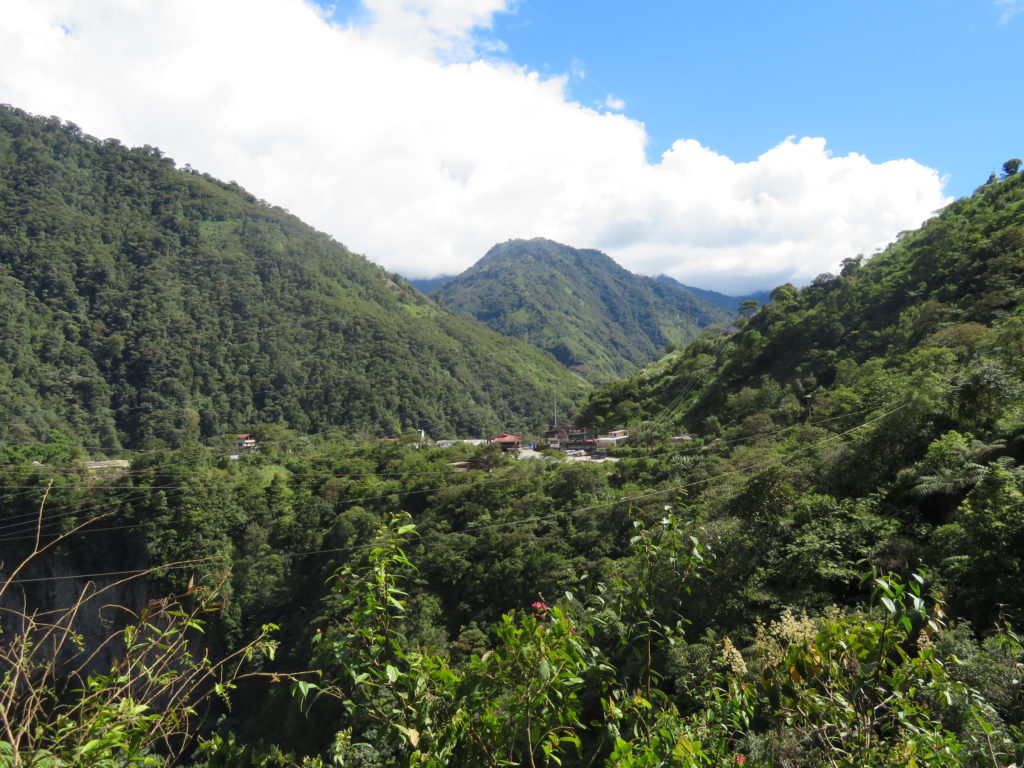
The spa town of Baños sitting on the Río Pastanza offers a great opportunity to sit back and relax and enjoy the waters. Baños is surrounded by verdant green countryside and offers a great mixture of outward bound activities like rock climbing, white water rafting and simple trekking in the surrounding hills that offer some fine views of the river valley and surrounding countryside.
Further east the Andes foothills give way to genuine Amazonian rainforest. Here Ecuador is embarking on a extended policy to restore the rainforest to its original state. Large rivers flow down to the Amazon and are surrounded by the fragile rainforest, where in parts some of the indigenous communities still live. One of the unexpected things about the landscape here is how much of the water goes underground and also how thin the topsoils are highlighting just how fragile the forest is.
3. Quilotoa
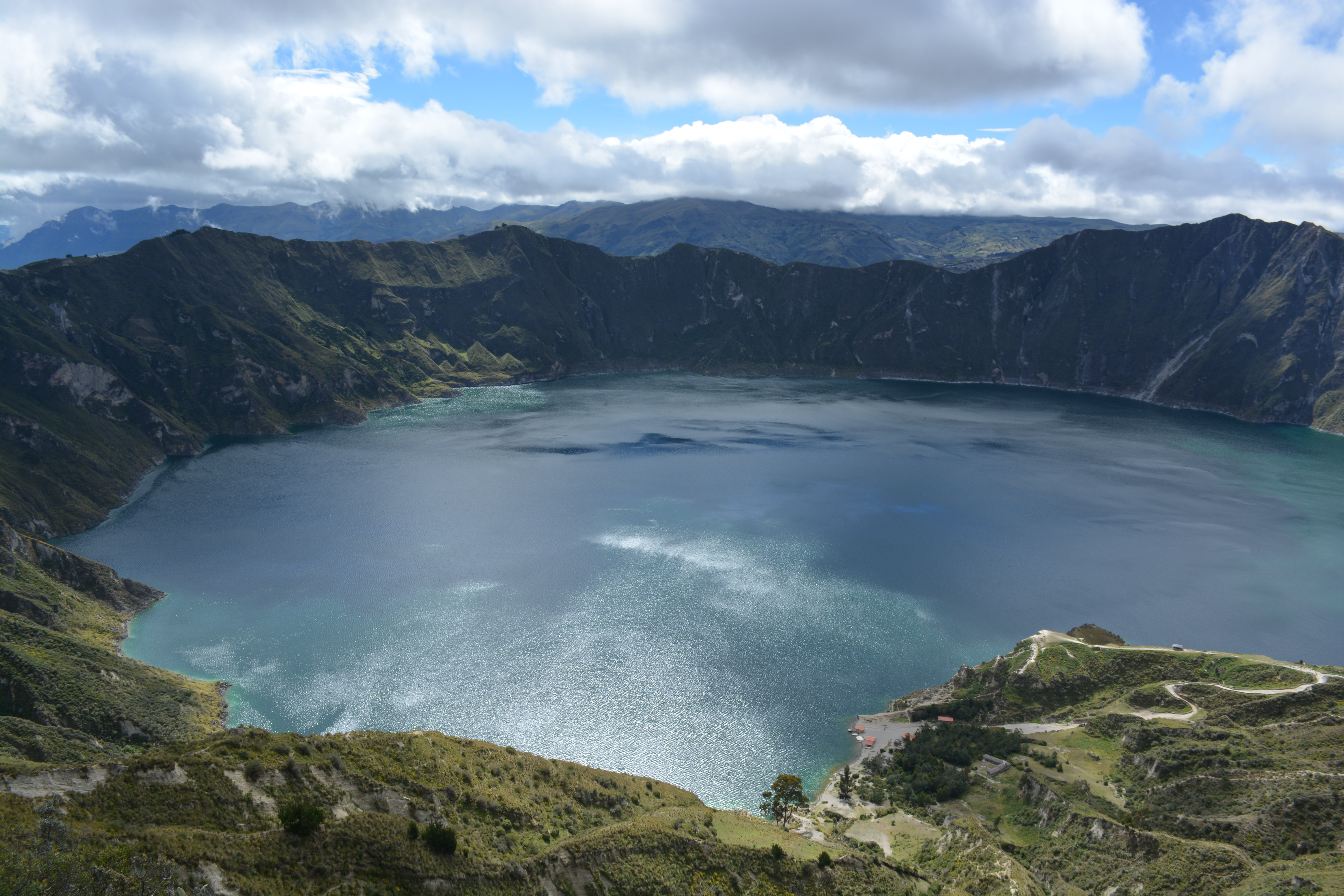
Nestled in the Andes near Cotopaxi is Laguna Quilotoa an emerald coloured lake in the crater of an old extinct volcano. The views of the lake and the surrounding remnants of the old volcano are spectacular. There is a popular trek from the crater lake looping around the surrounding countryside and valleys that also take in a number of remote settlements that makes a good trek for day or more.
4. Cuenca

Cuenca is Ecuador’s third city and unlike Quito or Guyaquil retains much of its organ charm as an attractive colonial city. The architecture has retained its original scale and compactness and the collection of colonial churches makes for a very attractive town.
Cuenca is famous for the manufacture of Panama hats which employ many families in making hats in the traditional way. The term Panama hat came from an Equadorian worker on the Panama Canal catching the eye of the the then US President Theodore Roosevelt and from thereto story began. The industry and communities that make the hats in the traditional style is an UNESCO Cultural Heritage Stite.
5. Otovalo

To the north of Quito is Otovalo, one of mainland Ecuador’s principal tourist destinations. Otovalo is famous for its markets, which operate all week, but on Saturday’s the market is massive. It is one of the places to purchase Andean textiles and also has a large range of tourist goods as well as products for the local population. The animal market is also well worth the effort in viewing.
6. Tulcan

On the border with Colombia is the small town of Tulcan, which is well worth a detour when travelling north. Tulcan’s principal attraction is the cemetery which contains some of the finest topiary in the world. Gardeners work all day and year long keeping the hedges, which are carved into various animals and Inca deities, are immaculate. Crossing the Colombian border, or more relevant leaving Ecuador, requires a bit of planning, especially in the current climate with many Venezuelan refugees travelling south the Peru etc. mean that the border is very busy.
7. Galapagos Islands

The Galapagos Islands live up to to the cliches and are quite unlike anywhere else in South America or the World. Thy are are three hours flying time and nearly 1,000 kms from the mainland and their isolation from human life for many years has created a unique environment where visitors can only wonder at what Darwin and the early explorers found and can play out their own versions of David Attenborough. The Ecuadorian authorities rightfully protect the environment and do their best to minimise human impact on the animals.
To fully experience all that the Galapagos has to offer it is worth planning both time at sea and on land. Indeed the experiences of the early settlers are also a fascinating insight to the hardships and strugglers those settlers had, often not so many years ago.
The wildlife are not intimidated by human, and for example visitors to the beaches will walk around the many sea lions lounging on the beaches unperturbed by the visitors. Snorkelling in the sea you will swim with the many sea lions, turtles and multitude of fishes. The waters are not crystal clear like other diving sites, as the uniqueness of the Galapagos lies in the currents, mostly cold, sweeping up from the ocean floor all the nutrients which all the marine life come to feed on.
Even to the untrained eye, both the different finches and tortoises on each of the islands are obviously different from each other, making it a fascinating experience to follow in the footsteps of Darwin and see for oneself the theory of evolution in its rawest form.
Blogs
- http://highburynomad.com/quito-colonial-and-inca-capital/
- http://highburynomad.com/quito-otavalo-the-equator/
- http://highburynomad.com/crossing-the-ecuador-colombia-border/
- http://highburynomad.com/banos-and-the-equadorean-amazon-forests-and-jungle/
- http://highburynomad.com/chugchilan-quilotoa-loop/
- http://highburynomad.com/banos-and-the-equadorean-amazon-forests-and-jungle/
- http://highburynomad.com/galapagos-islands-part-1-sea-based-activities/
- http://highburynomad.com/galapagos-islands-part-2-land-based-activities/
Travel
Ecuador is a relatively small country and distances between the main centres are not large, at least by South American standards. However Ecuador is still large when compared to European countries, though there are large tracts of the Amazon that are relatively sparsely populated.
In the Andean Cordillera, where most of the population lives, the main highways are well maintained and relatively fast and efficient. Coming from Peru in the South it its also noticeable how much cleaner the roadsides. For while Ecuador has its fair share of rubbish, the country feels a lot cleaner and tidier than Peru.
Costs
Ecuador uses the USD as its currency, and this can make it much more expensive that the surrounding countries, whose currencies slowly depreciate against the major world currencies. The USD makes prices more stable, but often for locals means that many things are out of reach.
If you are travelling too other countries from Ecuador, it may make sense to stick up on cash USD, though you need to be careful to obtain clean new notes as often people are reluctant to accept old notes. The costs of drawing cash out of the ATMs in Ecuador was negligible unlike other countries where you had to shop around.
We found hotels in mainland Ecuador were generally good value and certainly one of the cheaper countries in South America. However the Galapagos Islands are very expensive, and quite deliberately so as to reduce the number of visitors.
Places we Stayed
- Gran Hotel, Cuenca
- Hostal Cloud Forest, Chugchilán
- Hosteria Pequeño Paraiso, Banos
- Huasquila Amazon Lodge, Ecuadorian Amazon
- Hotel Fuente de Piedra II, Quito
- Friends Hostel, Quito
- Hotel Lumar, Tulcán
- MV Galapagos Legend, Galapagos Islands
- Floreana Lava Lodge, Floreana Island, Galapagos Islands
- Isamar Hotel, Isabela Island, Galapagos Islands
Slideshow


